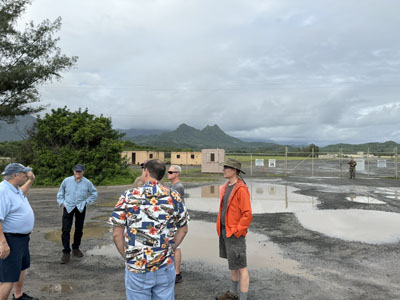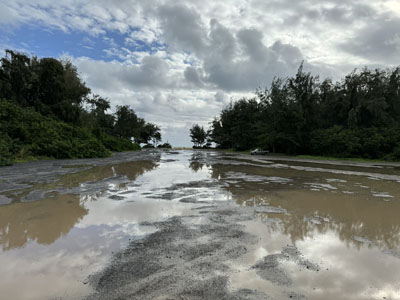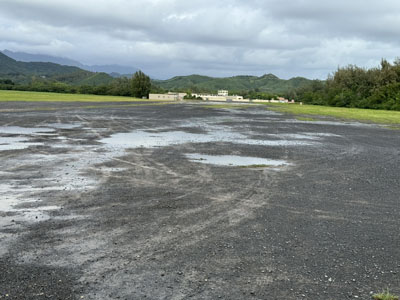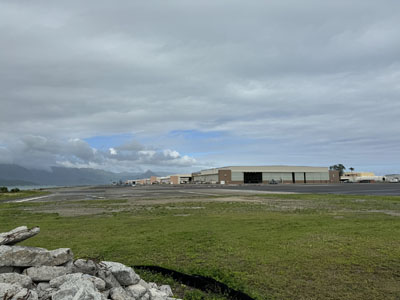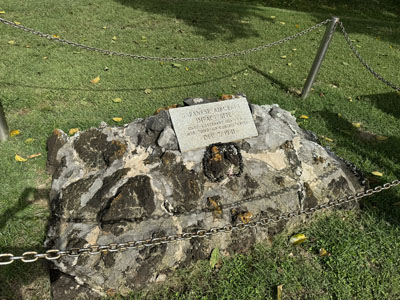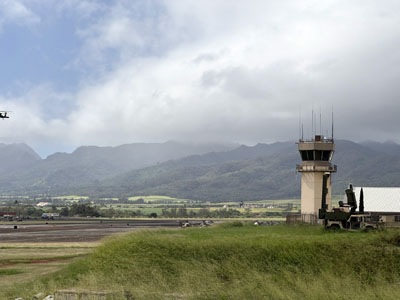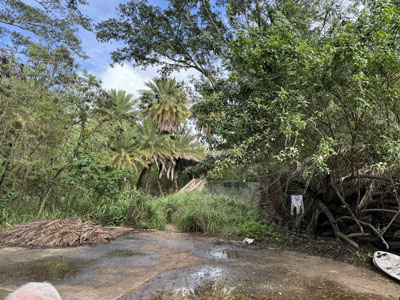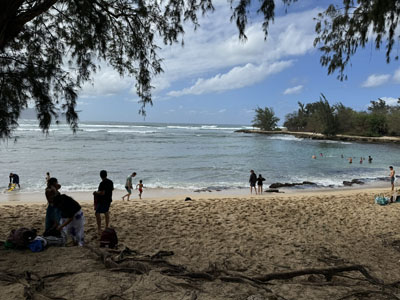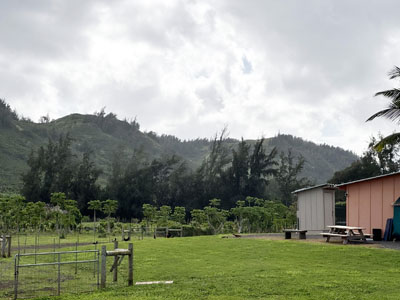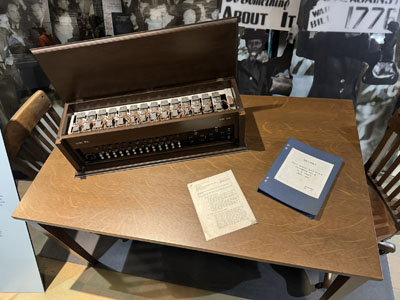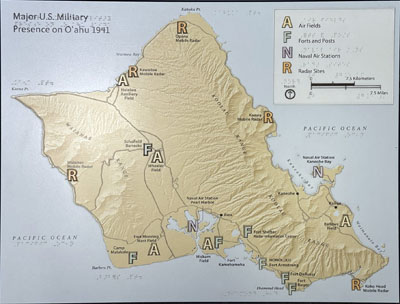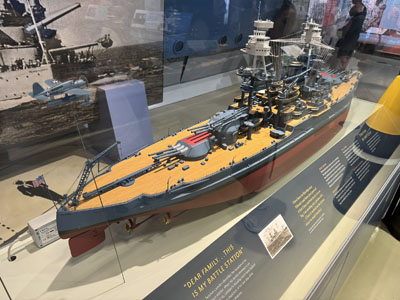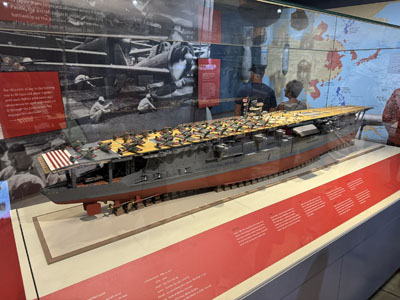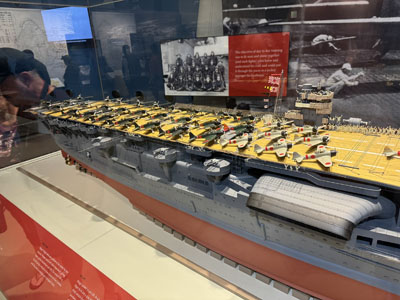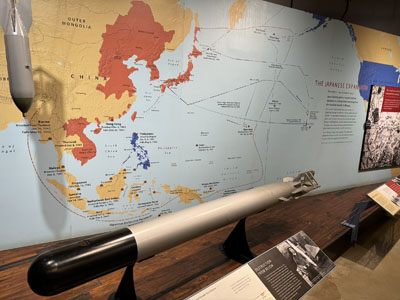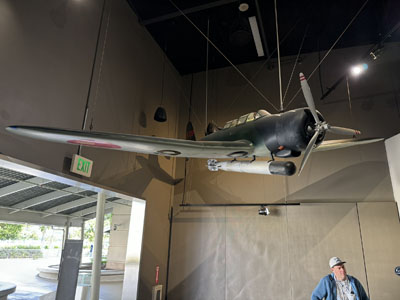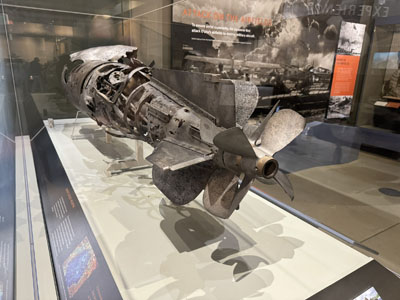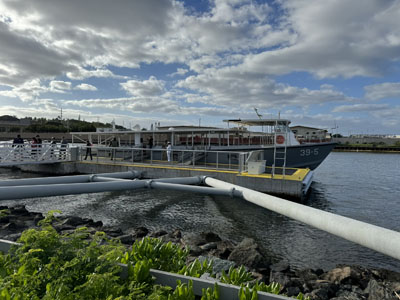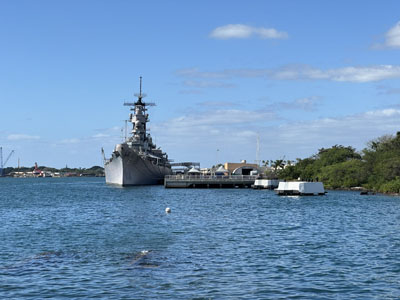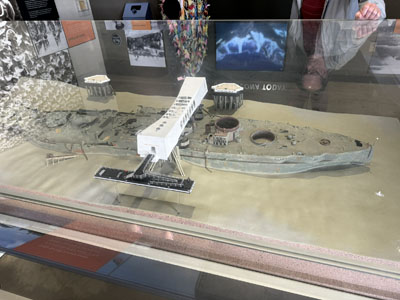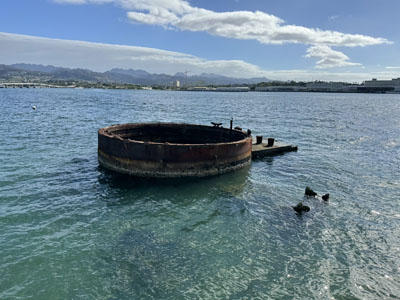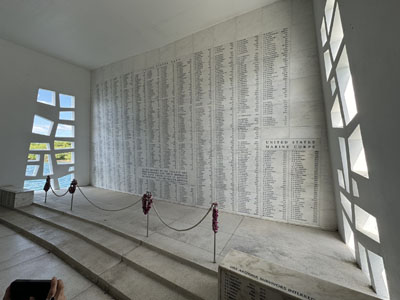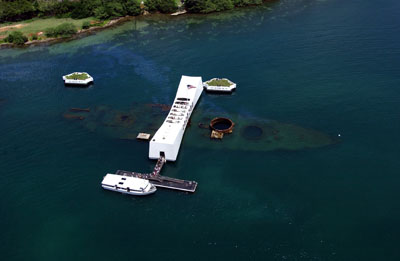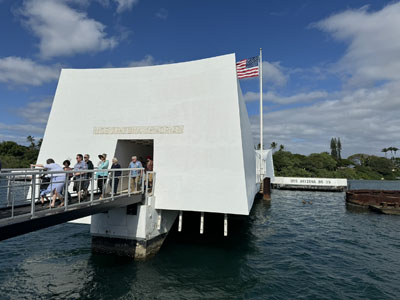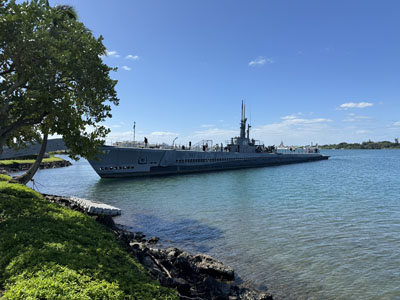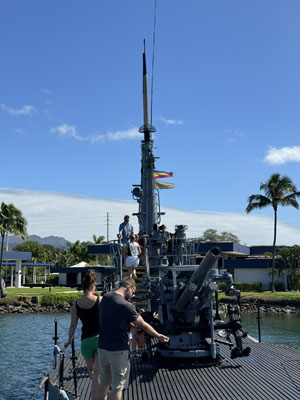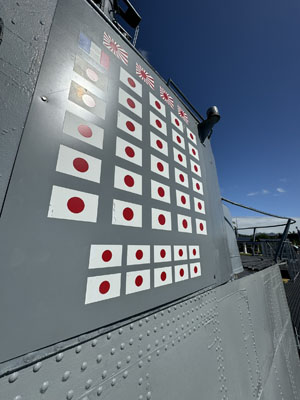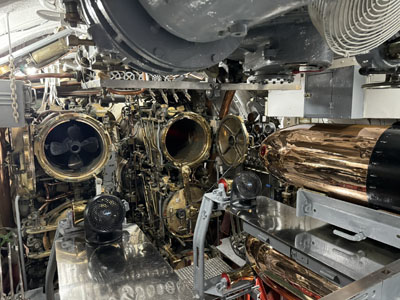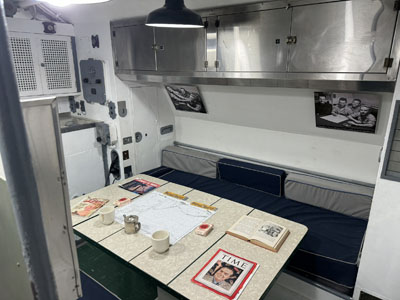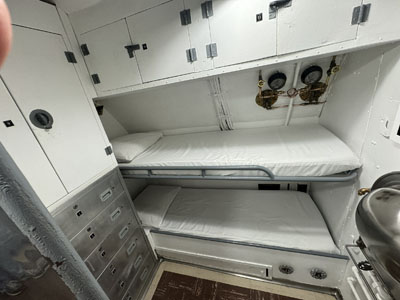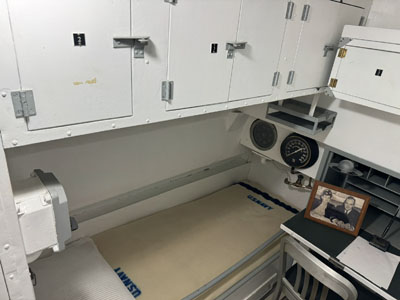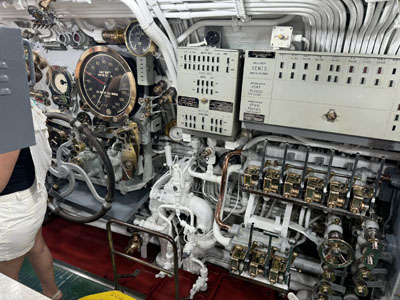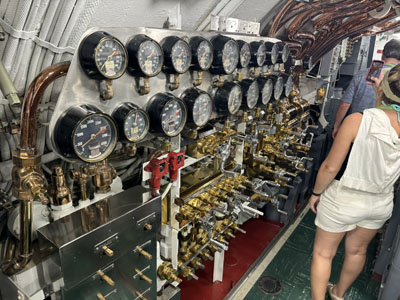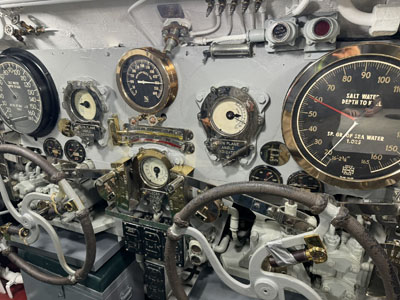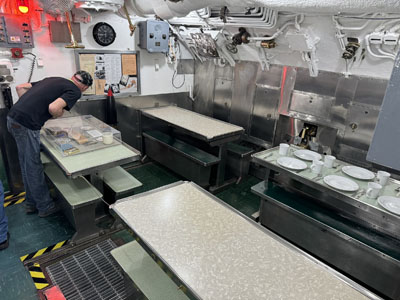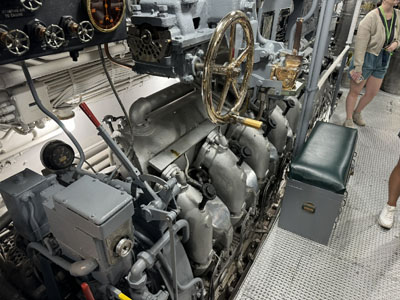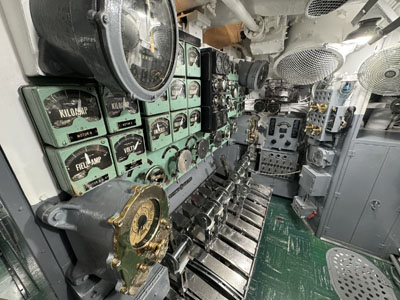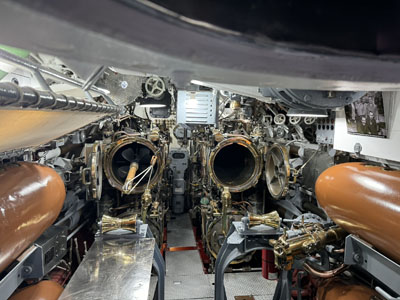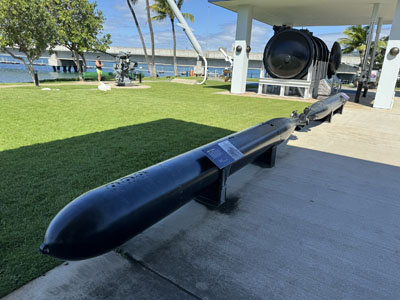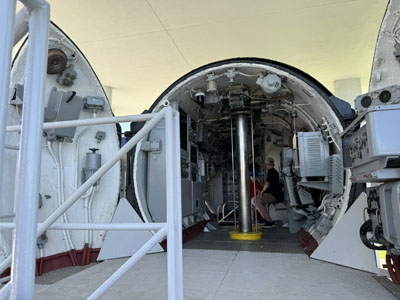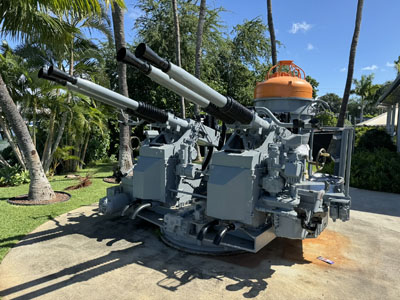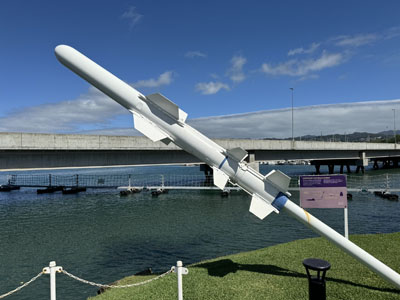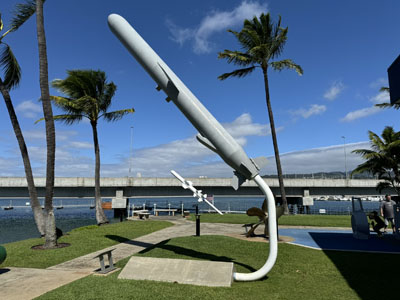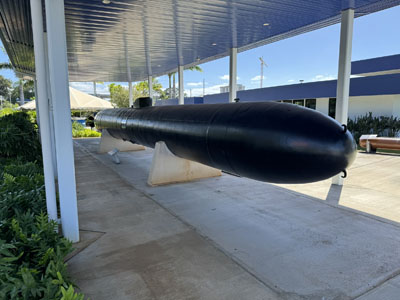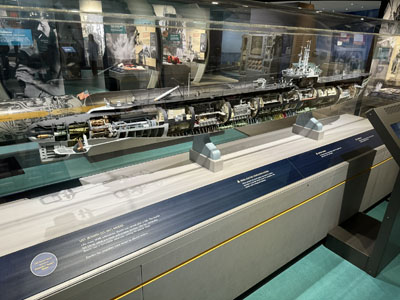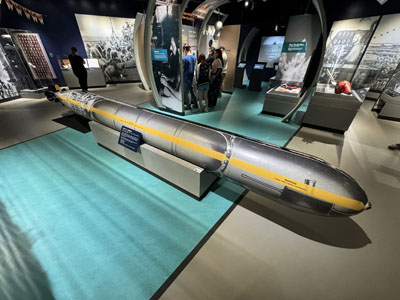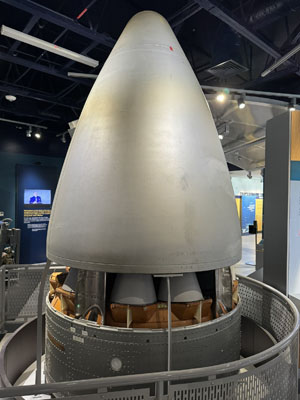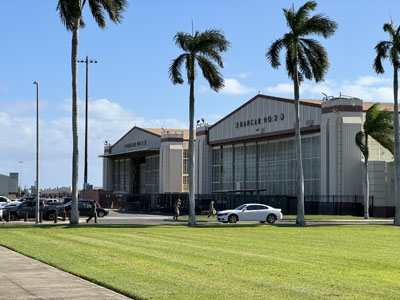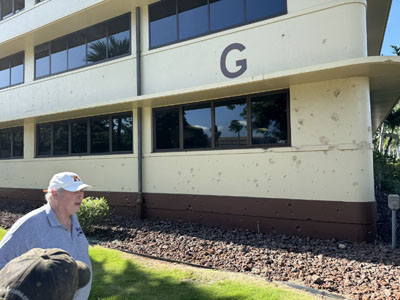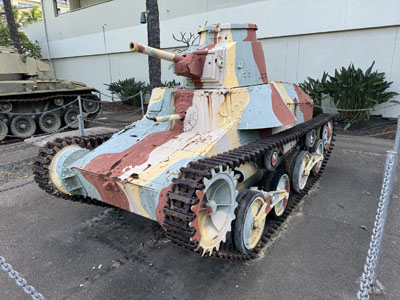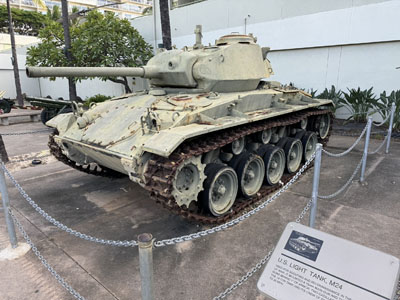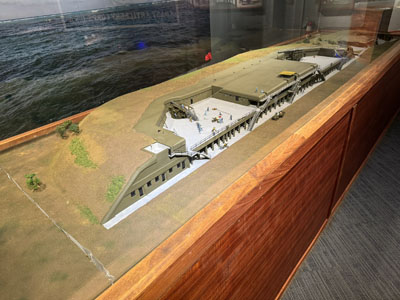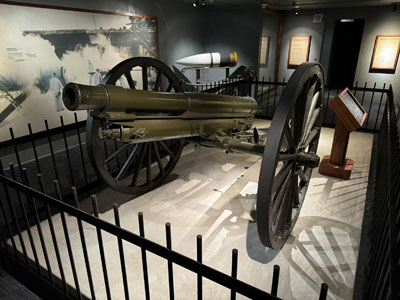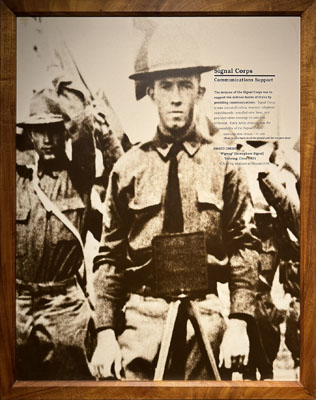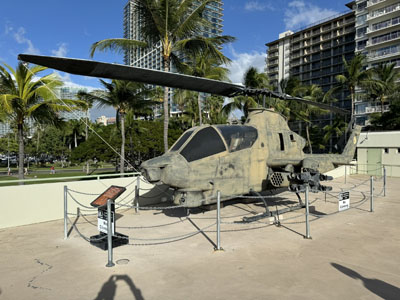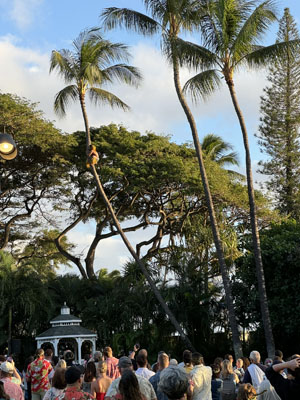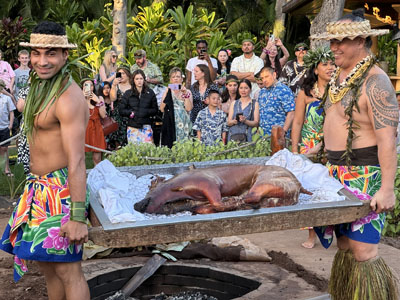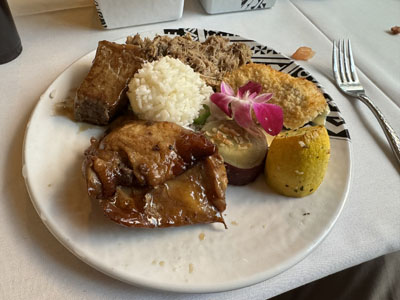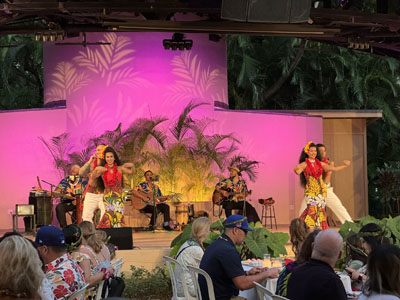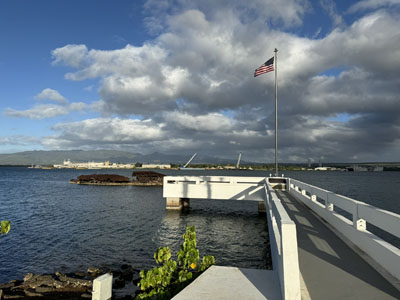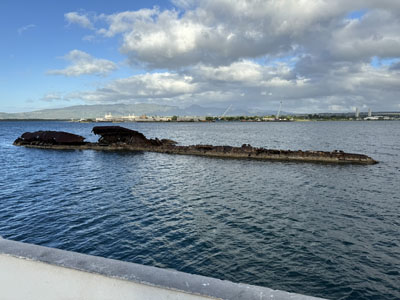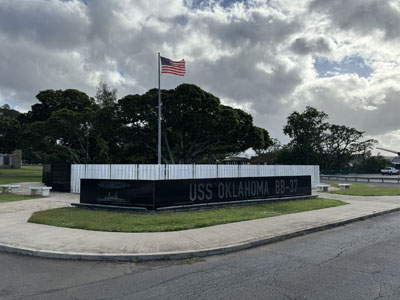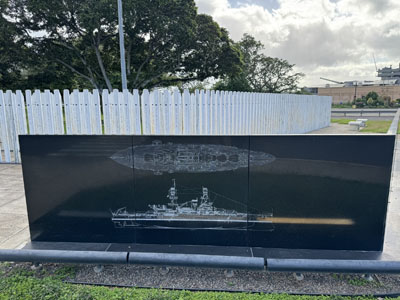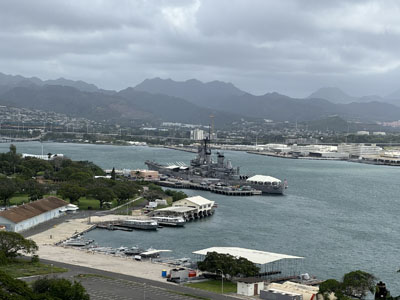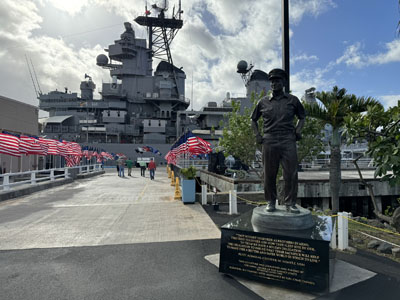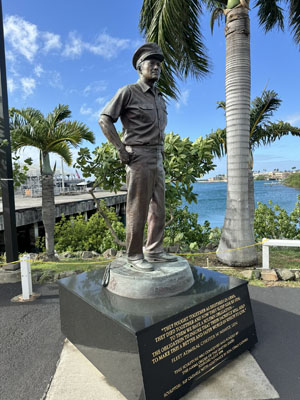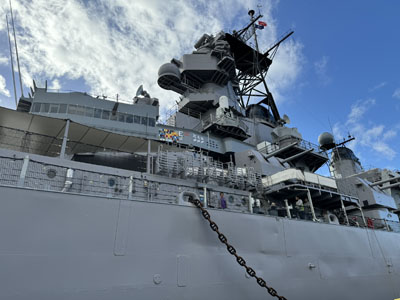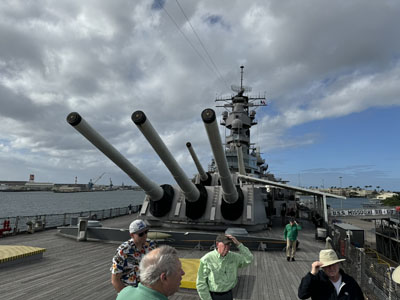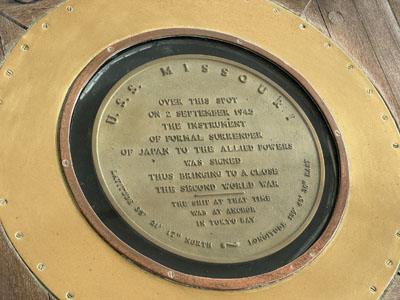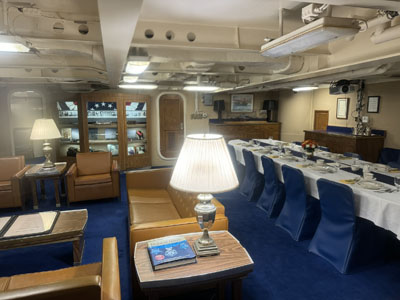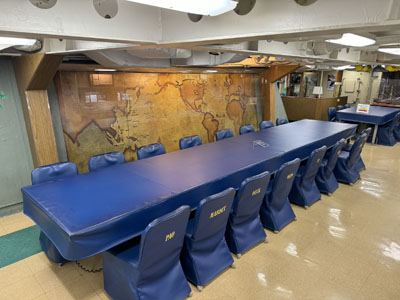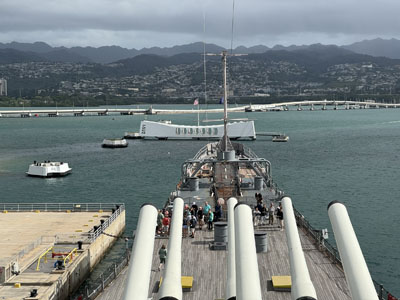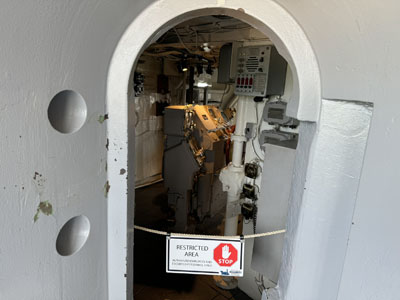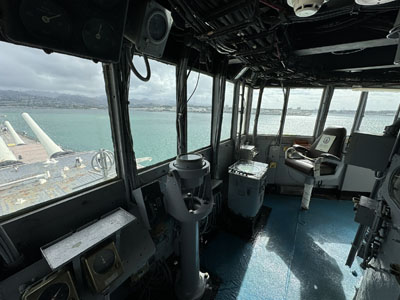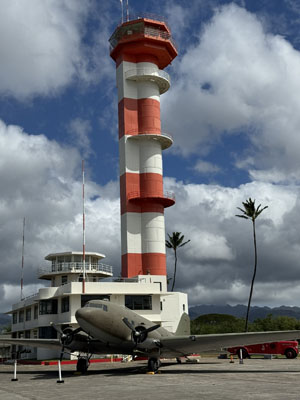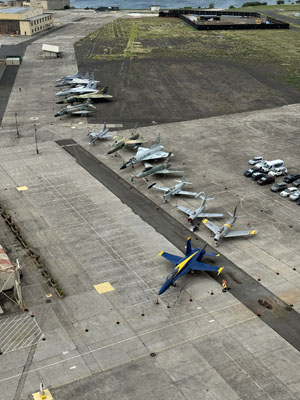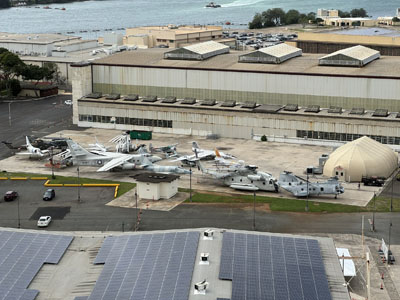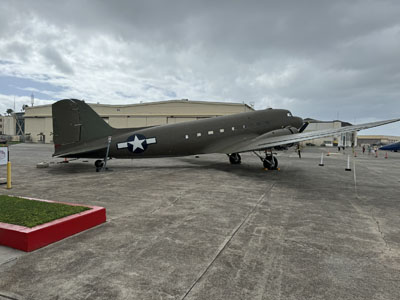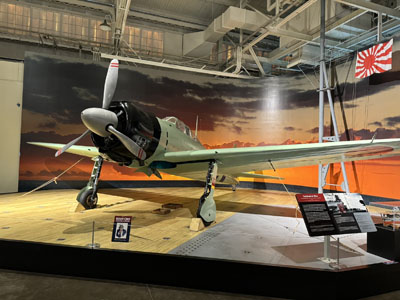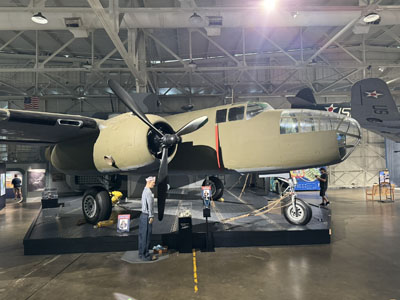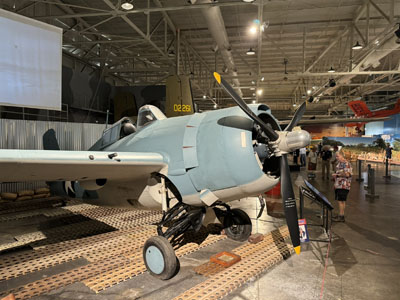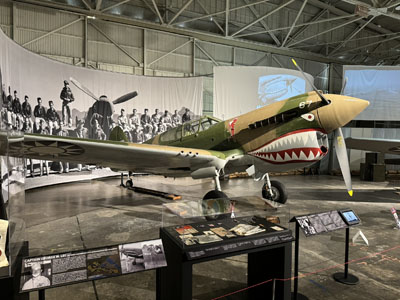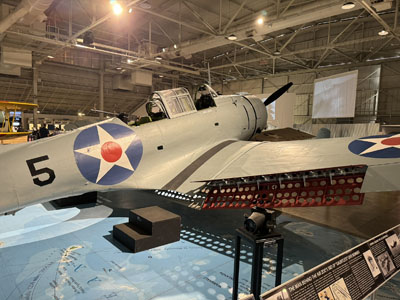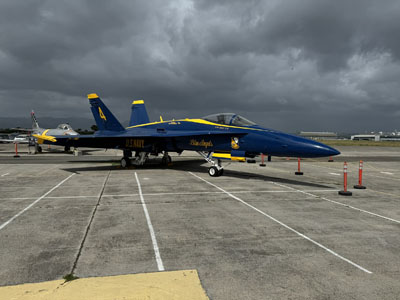Hal Jespersen's Central Pacific Campaign Tour, February 2024 (Part 1)
This is my (Hal’s) report on my tour of Admiral Nimitz's World War II Central Pacific campaign, hosted by the Blue and Gray Education Society. Although I usually go with BGES for Civil War tours—(see my Civil War pages)—the executive director, Len Riedel, is hosting this tour about World War II and I decided to take a flier. Len has a lot of experience in Air Force operations and is well known for packing a lot of military history and exploration into a tour, and his offering is considerably less expensive than similar alternatives from the National World War II Museum or Stephen Ambrose Historical Tours, both of which companies I have used in the past. We will start in Honolulu to discuss the beginning of the war and then fly to Guam, Saipan, and Tinian for the campaign in the Mariana Islands. Some members of the group are continuing on for four days the Philippines, but that seemed like too much of a time commitment for me (and the differential airfare was disproportionately much more expensive for my particular itinerary).
This is a long report with a lot of photos, so I have broken it into three parts.
Contents – Part 1
Thursday, February 1 — to Honolulu
I flew United Airlines nonstop from San Francisco to Honolulu and Ubered to the Ala Moana hotel, which is next to a giant modern shopping center, sort of near Waikiki Beach. (I would not select this hotel for a beach vacation.) Light rain foiled my initial plans for a brief afternoon on the beach, although this was the only inclement weather on the whole trip. I met the group at 6 PM. There are only seven of us, plus Len, so a rather intimate experiences is in store. Len started with a lecture about the US’s and Japan’s postures before the war and how Roosevelt moved major portions of the Pacific Fleet from San Diego to Pearl, as well as a detailed overview of our agenda in Hawaii. We had an unhosted dinner in the hotel’s sports bar. Most of our group are East Coasters, so they were pretty jet lagged; it’s only two hours earlier for me.
Friday, February 2 — Oahu
We loaded up at 8:30 in a nice Ford Transit van, 15 seats with a tall ceiling. I was lucky enough to be granted access to the front seat with adequate legroom. We headed northeast to Bellows Air Force Station, which is now a recreation center for active duty military. We stood outside a wire fence to see the outlines of the original runway, proceeding from a few small hangars to the ocean. The first wave of Japanese planes sent a single reconnaissance plane over the base, but the second wave attacked, killing at least two airman. A B-17 flying in from the states was forced to land here to escape Japanese fighters. We took a drive through the recreational area and saw lots of nice small cabins and condos that are available at low cost to servicemen, right on the beach. Pretty nice.
Then we drove northwest to Kaneohe Bay, north of the town of Kailua, and visited the Marine Corps base there. One of the key highlights of this trip is that Len is a retired Air Force officer, so he had an ID card that got us onto a number of normally restricted military bases. This was a seaplane base during the war and in the second wave of Japanese attacks, they destroyed 27 out of 33 PBY Catalinas. We got to see a number of antique aircraft on static display, and also a number of modem Ospreys on the flight line. We visited a small plaque dedicated to a Japanese lieutenant who crashed his plane into the base, an action some credit as the first kamikaze attack during the war, although it was the result of an aircraft failure, so probably does not really count as such. Len said that despite the US anger at the treacherous nature of the surprise attack, the lieutenant was buried with military honors and was later repatriated.
We headed back down south, passing through really dramatic mountains, which I could not really photograph from the moving van. We stopped at Wheeler Army Airfield, which is currently the home of the 25th Combat Aviation Brigade, part of the 25th Infantry Division. Len explained that before the war the Army was in charge of Oahu, and the Navy was simply a tenant, so this was a major installation. Unfortunately, all of their aircraft had been neatly lined up on the flight line, wingtip to wingtip, a method chosen to defend against saboteurs, and the second wave of Japanese attacks strafed this line, destroying 76 planes. Some of the planes were able to launch and fought furiously with the Japanese, achieving some successes. We could not get onto the actual flight line, which was in use by a number of active helicopters, and it was difficult to line up a photo to show the original flight line and 1941 hangars, which are still there.
We drove over to nearby Schofield Barracks, toured around a bit, and then went to the PX for lunch. I had not been in a PX for 44 years and was amazed at how different it looked, like a giant Walmart with a food court attached. This food court had at least a dozen fast food restaurants represented. I chose a sub sandwich from Jersey Mike’s. Then we drove back to the north coast of the island, through the historic town of Hale’iwa, to a former fighter strip, which had been used as an emergency landing site. It was famous during the attack because it was not a target of the Japanese, but was able to launch some planes in opposition. The recent movie Pearl Harbor showed the officers played by Ben Affleck and Josh Hartnell riding jeeps to find planes to go up against the Japanese, and that fictional incident was loosely based on this airstrip and the heroic actions of two actual lieutenants. There is little left of the airstrip. It has been swallowed by vegetation and there is a large homeless encampment that dissuaded us from exploring. We took some time to admire surfers on some dramatic north coast waves.
We continued along the north coast in search of the Opana radar station, which famously detected the Japanese planes incoming, but took no action because they assumed it was a scheduled arrival of B-17s from the US. We wandered around the Turtle Bay resort (a rather exclusive place that is currently offering rooms in the range of $994–$2211 per night) looking for a monument to the station, but it turned out to be accessible only to resort guests. Then, we found the actual station on Google maps, but it was in a restricted area operated by a US Navy research station, so we could not climb the hill to visit it.
On the way back south, we stopped again at Schofield Barracks, curious to see the original barrack buildings from the 1910–20s, which had been strafed by the Japanese. We eventually found Quads B and C, which happened to look pretty much exactly like the more modern versions, and any damage from the attack has been patched up pretty well. We passed by a museum of the 25th Infantry Division, but did not have time to check it out. One thing we commented on was the numerous signs with messages such as “Love your subordinates and treat them with empathy and care.“ It was well over an hour getting back downtown to the hotel in heavy traffic. The group broke up into smaller pieces for dinner. I ended up with a chicken wrap from the ABC store, which was actually quite decent.
Saturday, February 3 — Pearl Harbor
An early start today, 6:30, but I feel like I am still on California time anyway. We drove to the Pearl Harbor visitor center, the National Park Service installation that seems to have the earliest opening time, 7 AM. I had been here once before, many years ago, and they have improved their interpretation infrastructure quite significantly. We were provided with audio devices and took a self guided tour through excellent exhibits about the causes of the war, the run up to the attack, the attack itself, and a lot of the ships and other hardware involved. Jamie Lee Curtis was the narrator because her father, Tony, was a World War II Pacific veteran. Some of the highlights for me were seeing an analog computer used to break the Purple code, the results of which were called Magic, in Station Hypo; detailed demonstrations of the primitive hardware problems associated with the Opana radar sightings; a large model of the Japanese carrier Akagi; and parts of the only Japanese torpedo recovered after the attack.
We participated in a virtual reality simulation of the attack, sitting on revolving stools, wearing Oculus/Meta VR headsets. Although I found the graphics a bit crude, the immersive nature of being able to see 360°, as well as up and down, was quite effective. We took a shuttle boat across the harbor to the USS Arizona Memorial. You can’t really see very much of the submerged ship other than the rusted gun turret number 3, but I was impressed with a volunteer lady who gave us a speech in the shrine room regarding the dead as well as a detailed explanation of how the NPS conducts burials for survivors of the attack who wish to be returned to their ship upon their deaths. We enjoyed having a trainee Navy sailor trying for almost 10 minutes to actually dock our shuttle boat, under the disapproving eye of a young lady sailor. We also watched a very effective film about the attack, using lots of archival video footage.
We took another audio self guided tour inside the submarine USS Bowfin, which was quite interesting, although rather stressful for someone of my stature. Going through those hatches between compartments was quite a struggle for me, although the rest of the experience was not too bad. They have the interior spit shined with gleaming brass fixtures all over. It is amazing how complex the interior is, even in a boat that old. The Bowfin was commissioned on December 7, 1942, so it had the nickname Pearl Harbor Avenger, and it had a very successful career with numerous kills. (Len commented on a couple of occasions that he was convinced the US submarine service was the decisive winning factor in the Pacific war.
Next door is the submarine museum, which was quite excellent, with the contents divided equally between World War II and the Cold War. I was impressed with a mockup of the famous Mk 14 torpedo, finding that almost half of its length was a container of air compressed at 2000 psi, which they somehow mixed with fuel to create steam that spun a turbine to operate the propeller. I was also intrigued by the massive upper half of a Poseidon C3 ballistic missile, showing the 14 MIRV warheads. And appalled by a Kaiten, a secret Japanese manned torpedo.
We had lunch at the Navy Exchange food court, which was even larger than the PX we ate in yesterday, but it was similar in format with comparable restaurants. Today I had an excellent sandwich from Popeye’s fried chicken. Then it was off to yet another military installation, Hickam Field, currently a US Air Force Base, where we saw a number of giant cargo aircraft, including C17s and C5s, getting ready to transport to Guam for an upcoming exercise. We walked around the headquarters of Pacific Air Forces, which used to be a barracks building. On December 7 the Japanese strafed and bombed aircraft on the flight line, but also hit this building while airmen were eating breakfast, killing about 35 of them; overall, 189 men were killed at Hickam. The Air Force has chosen to not repair all of the pockmarks on the building from the bomb damage, so it remains a reminder of the severity of the attack.
Back in downtown Honolulu, we drove to Fort DeRussy. In a building that was part of the former Battery Randolph, a coast artillery battery, we visited the Army Museum. it is sort of an odd format because it is in a long, dark hallway with adjacent rooms, but was very interesting. It started with warfare of the native Hawaiians, including the conquest by King Kamehameha, and then followed up through the 18th, 19th, and 20th centuries. I enjoyed seeing a Japanese type 95 Ha-Go light tank and an AH-1 Cobra helicopter, and they also had lots of very nice specimens of infantry weaponry throughout the years. And they gave proper deference to my beloved Signal Corps, including acknowledging its importance in introducing military aviation to the islands.
Also at DeRussy is the Hale Koa (“home of warriors“) Hotel, which is a recreational facility for active duty and retired military, a rather luxurious beachside resort in downtown Honolulu. We partook of the famous luau, a three hour affair with island cocktails, a delicious dinner highlighted by a pig roasted in an underground pit, and entertainment that included performances of various Polynesian cultures. And a small tribute to Don Ho! Part of it included a cool dance by a guy with a pair of flaming batons. I found it interesting to note how few of the attendees seem to be active duty military—it was a pretty elderly crowd.
Sunday, February 4 — Pearl Harbor and flight to Guam
We drove to the northern side of Ford Island, once again relying on Len’s military ID. We stopped at the USS Utah memorial, which is small pier with a view of a rusted hulk peeking out of the harbor. Utah was an obsolete battleship used as a training vessel. The Japanese attack killed 58 sailors. Then we entered the Naval Air Station, which was originally a seaplane base, and we saw one of the ramps used to launch them into the harbor. We could see a few original hangars, but not much else. This completed our tour of island airfields, with the exception of Ewa, southwest of Pearl, which had been an airship mooring site, but there is nothing left of it.
On the way to the USS Missouri Memorial, we walked by the USS Oklahoma Memorial. This was the third battleship completely destroyed in the attack, but she sunk in a Pacific storm while being towed to San Francisco, so the memorial is 429 small marble columns with the names of the dead. Missouri is a very impressive ship in excellent shape. Perhaps the $35 tickets and $30 add-on tour fees help them with the maintenance. We happened upon a free tour hosted by a Japanese lady, which I thought ironic, and she did an excellent job with lots of detail. The highlight here is the surrender ceremony, which she discussed in detail, showing us the exact spot on deck where MacArthur sat. And where a kamikaze plane hit her in the battle of Okinawa. We didn’t have a lot of time, so I raced on my own through a tour of the lower decks (wardrooms, crew quarters, etc.) and then up some precarious ladders to the navigation bridge, which impressed me when I peered into the conning tower, which is protected by over a foot of armor.
The Pearl Harbor Aviation Museum is also on Ford Island. The tickets were $25 plus an extra $20 to visit the control tower. (Of course, all of the ticket costs I mention here were covered by BGES, but I wanted to comment on the burdens of modern tourism.) There was a great view of the entire battlefield from up in the tower and we had a lecture from a young docent who gave us a detailed description of the battle, although without any new information to be added to our experience. It was exceptionally windy today and you could really feel it standing outside on the top of this tower. The tower appears in the 2001 movie Pearl Harbor when Tom Sizemore runs up to the top to shoot Japanese planes with a rifle. The museum is pretty decent, with about a half dozen WWII Pacific planes inside and a long flightline of jet fighters and helicopters. I did not attempt photograph every plane. There is an extra hangar that is a big restoration workspace, which is highlighted by most of a B17 nicknamed the Swamp Ghost, recovered in part from a swamp in Papua New Guinea.
We returned to Honolulu airport for our 8-hour flight to Guam.
